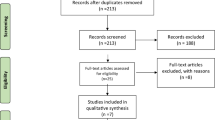Abstract
Purpose
In the last 10 years, there has been an increasing tendency toward operative fixation of clavicle fractures. In this retrospective analysis, we will demographically assess all patients who sustained a clavicle fracture and were treated in our university hospital between 2004 and 2014.
Methods
We retrospectively updated our database and analyzed all adult patients who were diagnosed with a clavicle fracture in our hospital. The following parameters were included in the database: age, gender, Robinson classification, date of trauma, injury mechanism, time until surgery, and reason for delayed surgery. Descriptive statistics were used to describe differences between patient groups and linear regression was performed to identify trends over time.
Results
667 patients were included for analysis. The mean age was 43 ± 17.7 years. The majority of clavicle fractures occurred due to bicycle injuries (35.3%) and these increased from 2004 until 2014 (r = 0.738, R² = 0.545, p = 0.009). Patients with a midshaft clavicle fracture were increasingly treated primarily surgically (r = 0.928, R² = 0.861, p < 0.0001). There was an increased ratio of delayed surgery in relation to age from the age of 16 (9.1%) until the age of 70 years (37.2%).
Conclusions
There is an increasing number of fractures sustained by bicycle accidents and an increasing number of patients undergoing operative treatment. Middle-aged patients more often had delayed surgery compared with young adult patients. This could be due to an increased activity level of the elder population and the concomitant demand for a faster return to activities.
Level of evidence
III, retrospective comparative study.







Similar content being viewed by others
Abbreviations
- MBA:
-
Motorbike accident
- MVA:
-
Motor vehicle accident
- LEF:
-
Low-energy fall
- HEF:
-
High-energy fall
References
Woltz S, Sengab A, Krijnen P, Schipper IB. Does clavicular shortening after nonoperative treatment of midshaft fractures affect shoulder function? A systematic review. Arch Orthop Trauma Surg. http://www.ncbi.nlm.nih.gov/pubmed/28639075.
Khan LAK, Bradnock TJ, Scott C, Robinson CM. Fractures of the clavicle. J Bone Joint Surg. Am [Internet]. The American Orthopedic Association. 2009;91:447–60. http://www.ncbi.nlm.nih.gov/pubmed/19181992.
Huttunen TT, Launonen AP, Berg HE, Lepola V, Felländer-Tsai L, Mattila VM. Trends in the incidence of clavicle fractures and surgical repair in Sweden: 2001–2012. J Bone Joint Surg Am. 2016;98:1837–42. http://jbjs.org/cgi/doi/10.2106/JBJS.15.01284.
Huttunen TT, Kannus P, Lepola V, Pihlajamäki H, Mattila VM. Surgical treatment of clavicular fractures in Finland—a register based study between 1987 and 2010. Injury. 2013;44:1899–903. http://www.ncbi.nlm.nih.gov/pubmed/24091259.
Althausen PL, Shannon S, Lu M, O’Mara TJ, Bray TJ. Clinical and financial comparison of operative and nonoperative treatment of displaced clavicle fractures. J Shoulder Elbow Surg. 2013;22:608–11. http://www.ncbi.nlm.nih.gov/pubmed/22960145.
Canadian Orthopaedic Trauma Society T. Nonoperative treatment compared with plate fixation of displaced midshaft clavicular fractures. A multicenter, randomized clinical trial. J Bone Joint Surg Am. 2007;89:1–10. http://www.ncbi.nlm.nih.gov/pubmed/17200303.
Woltz S, Stegeman SA, Krijnen P, van Dijkman BA, van Thiel TPH, Schep NWL, et al. Plate fixation compared with nonoperative treatment for displaced midshaft clavicular fractures. J Bone Jt Surg. 2017;99:106–12. http://www.ncbi.nlm.nih.gov/pubmed/28099300.
Robinson CM. Fractures of the clavicle in the adult. Epidemiology and classification. J Bone Joint Surg Br Engl. 1998;80:476–84.
Brinker M. Nonunions: evalution and treatment. In: Browner BD, Levine AM, Jupiter JB, Trafton PG, editors. Skeletal trauma basic science management reconstruction. 3rd ed. Philadelphia: Saunders, W.B.; 2003. pp. 507–604.
Acosta-Olivo C, Garza-Borjon A, Simental-Mendia M, Vilchez-Cavazos F, Tamez-Mata Y, Peña-Martinez V. Delayed union of humeral shaft fractures: comparison of autograft with and without platelet-rich plasma treatment: a randomized, single blinded clinical trial. Arch Orthop Trauma Surg. 2017. http://www.ncbi.nlm.nih.gov/pubmed/28667397.
Robinson CM. Fractures of the clavicle in the adult. Epidemiology and classification. J Bone Joint Surg Br. 1998;80:476–84. http://www.ncbi.nlm.nih.gov/pubmed/9619941.
Court-Brown CM, Caesar B. Epidemiology of adult fractures: a review. Injury. 2006;37:691–7. http://www.ncbi.nlm.nih.gov/pubmed/16814787.
Nordqvist A, Petersson C. The incidence of fractures of the clavicle. Clin Orthop Relat Res. 1994;127–32. http://www.ncbi.nlm.nih.gov/pubmed/8131324.
Kihlström C, Möller M, Lönn K, Wolf O. Clavicle fractures: epidemiology, classification and treatment of 2422 fractures in the Swedish Fracture Register; an observational study. BMC Musculoskelet Disord. 2017;18:82. http://www.ncbi.nlm.nih.gov/pubmed/28202071.
Nowak J, Holgersson M, Larsson S. Can we predict long-term sequelae after fractures of the clavicle based on initial findings? A prospective study with nine to ten years of follow-up. J shoulder Elb Surg. 2004;13:479–86. http://www.ncbi.nlm.nih.gov/pubmed/15383801.
Hill JM, McGuire MH, Crosby LA. Closed treatment of displaced middle-third fractures of the clavicle gives poor results. J Bone Joint Surg Br. 1997;79:537–9. http://www.ncbi.nlm.nih.gov/pubmed/9250733.
Virtanen KJ, Remes V, Pajarinen J, Savolainen V, Björkenheim J-M, Paavola M. Sling compared with plate osteosynthesis for treatment of displaced midshaft clavicular fractures. J Bone Jt Surg Am Vol. 2012;94:1546–53. http://www.ncbi.nlm.nih.gov/pubmed/22832887.
Zhao J-G, Wang J, Long L. Surgical versus conservative treatments for displaced midshaft clavicular fractures: a systematic review of overlapping meta-analyses. Medicine (Baltimore). 2015;94:e1057. http://www.pubmedcentral.nih.gov/articlerender.fcgi?artid=4504624&tool=pmcentrez&rendertype=abstract.
Ban I, Nowak J, Virtanen K, Troelsen A. Overtreatment of displaced midshaft clavicle fractures. Acta Orthop. 2016;87:541–5. http://www.ncbi.nlm.nih.gov/pubmed/27225678.
van der Meijden OA, Gaskill TR, Millett PJ. Treatment of clavicle fractures: current concepts review. J Shoulder Elb Surg. 2012;21:423–9. https://www.ncbi.nlm.nih.gov/pubmed/22063756.
Kona J, Bosse MJ, Staeheli JW, Rosseau RL. Type II distal clavicle fractures: a retrospective review of surgical treatment. J Orthop Trauma. 1990;4:115–20. http://www.ncbi.nlm.nih.gov/pubmed/2358923.
Acknowledgements
The authors would like to thank Inge Meex, Mathias Roobroeck and Lisa ten Kate for helping with setting up the preliminary database. The authors would also like to thank Catherine Wickham for proofreading the final version of the article.
Author information
Authors and Affiliations
Corresponding author
Ethics declarations
Conflict of interest
Michiel Herteleer, Thomas Winckelmans, Harm Hoekstra and Stefaan Nijs have no conflicts of interest.
Research involving human participants
This research has been approved by the ethical committee and their approval is added as file “59661 Nijs BD1 16NOV2016 GK signed.pdf”.
Informed consent
No informed consent was necessary, as this research is a retrospective chart review and approval by the ethical committee was obtained.
Rights and permissions
About this article
Cite this article
Herteleer, M., Winckelmans, T., Hoekstra, H. et al. Epidemiology of clavicle fractures in a level 1 trauma center in Belgium. Eur J Trauma Emerg Surg 44, 717–726 (2018). https://doi.org/10.1007/s00068-017-0858-7
Received:
Accepted:
Published:
Issue Date:
DOI: https://doi.org/10.1007/s00068-017-0858-7




